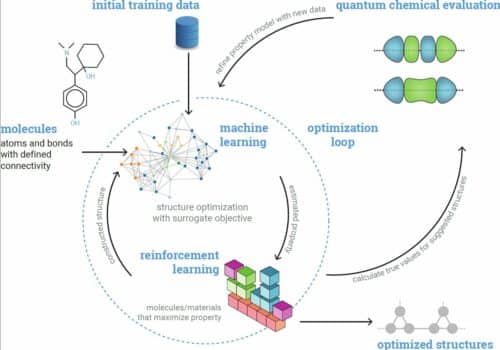Researchers develop a molecular optimization framework to identify promising organic radicals for aqueous redox flow batteries.
With the introduction of Machine Learning(ML) and Artificial Intelligence(AI) technology, a wide range of opportunities and development have also occurred. Optimization of data has brought exciting possibilities for identifying suitable molecular designs, compounds, and chemical candidates for different applications.

Researchers at Colorado State University and the National Renewable Energy Laboratory have been applying state-of-the-art molecular optimization models to different real-world problems that entail identifying new and promising molecular designs.
The framework consists of an AI tool AlphaZero coupled with a fast machine learning-derived model, made up of two graph neural networks trained on almost 100,000 quantum chemistry simulations. The first graph was trained to predict oxidation and reduction potentials. The second predicts the density of electrons and the local 3D environment.
Researchers pose molecule optimization as a tree search, where they build molecules by iterating components to add up into a growing structure. The advantage of this approach is that the prune off large branches of the search space where molecules start to show substructures that are unrealistic. Which therefore limits the search space to only molecules that meet a predetermined set of simple criteria.
The framework on testing identified several molecular candidates. Tests demonstrated that the set of possible candidates for a particular type of charge carrier in organic redox flow batteries may be larger than previously considered. It was noted that molecules found could lead to simpler, high-performance batteries without requiring the use of transition metals.
The researchers plan and look forward to identify new desirable compounds and molecular candidates for many different technologies, including aqueous redox flow batteries.
References : Shree Sowndarya S. V. et al, Multi-objective goal-directed optimization of de novo stable organic radicals for aqueous redox flow batteries, Nature Machine Intelligence (2022). DOI: 10.1038/s42256-022-00506-3







